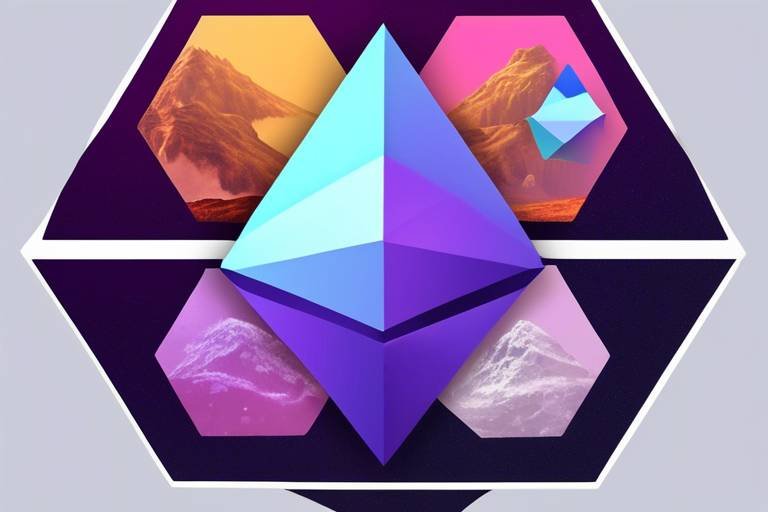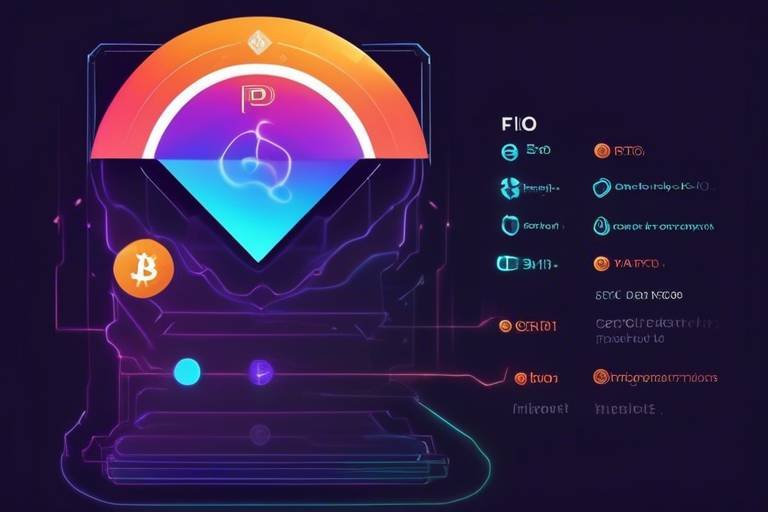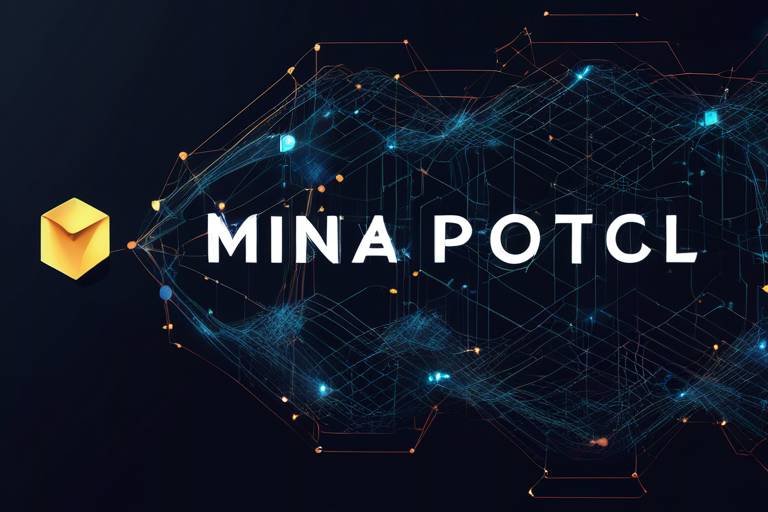Polygon (MATIC) - Scaling Ethereum’s Ecosystem
In the rapidly evolving world of blockchain technology, scalability remains a critical challenge, particularly for the Ethereum network. As more users flock to decentralized applications (dApps), the strain on Ethereum's infrastructure becomes increasingly apparent. Enter Polygon, a layer-2 scaling solution that aims to tackle these issues head-on. By enhancing transaction speeds and reducing costs, Polygon not only makes dApps more accessible but also ensures that developers can create and deploy their applications without the constant worry of network congestion. Imagine being in a bustling city where traffic jams are a daily occurrence; Polygon acts as the express lane, allowing for smoother, faster travel through the blockchain landscape.
What sets Polygon apart is its unique architecture and multi-faceted approach to scaling. It operates on top of the Ethereum blockchain, alleviating congestion by processing transactions off the main chain while still benefiting from Ethereum's robust security features. This means that users can enjoy the best of both worlds: the security of Ethereum and the speed of a layer-2 solution. Polygon's commitment to interoperability ensures that developers can seamlessly migrate their dApps to this platform, allowing for a smoother transition and enhanced performance without compromising on security.
As we dive deeper into the features of Polygon, it's essential to understand the various components that contribute to its effectiveness. The platform supports multiple scaling solutions, including both sidechains and rollups, each playing a vital role in improving transaction throughput. Sidechains operate independently of the Ethereum main chain but are still connected to it, while rollups bundle multiple transactions into a single one, significantly increasing efficiency. This dual approach allows Polygon to cater to a wide range of applications, from high-frequency trading platforms to interactive gaming environments.
The thriving developer ecosystem surrounding Polygon is another key factor in its success. By providing a comprehensive suite of tools and resources, Polygon empowers developers to innovate and create cutting-edge dApps. This ecosystem fosters collaboration and creativity, enabling developers to leverage the benefits of Polygon's scaling solutions while also contributing to the overall growth of the Ethereum network. It's like having a toolbox filled with the latest gadgets and tools; developers can pick and choose what they need to build their projects efficiently.
- What is Polygon (MATIC)? Polygon is a layer-2 scaling solution for Ethereum that enhances transaction speeds and reduces costs for decentralized applications.
- How does Polygon improve Ethereum's scalability? By processing transactions off the main chain and utilizing technologies like sidechains and rollups, Polygon alleviates congestion on the Ethereum network.
- What are the use cases for Polygon? Polygon supports various applications, including decentralized finance (DeFi), gaming, and NFTs, demonstrating its versatility across industries.
- Is Polygon secure? Yes, Polygon benefits from Ethereum's security while providing additional layers of protection through its own mechanisms.

Introduction to Polygon
Polygon is often hailed as a game-changer in the world of blockchain technology, especially when it comes to enhancing the scalability of Ethereum. Imagine trying to navigate through a busy city during rush hour—traffic jams, delays, and frustration abound. This is somewhat akin to what Ethereum users experience during peak times, with high gas fees and slow transaction speeds. Polygon steps in as a solution, acting like a well-planned highway system that alleviates congestion, allowing for smoother and faster travel.
As a layer-2 scaling solution for Ethereum, Polygon is designed to improve transaction speeds and significantly reduce costs. This makes decentralized applications (dApps) not only more accessible but also more efficient for both users and developers. With its innovative approach, Polygon is reshaping how we think about Ethereum's potential, offering a pathway to a more scalable and user-friendly blockchain experience.
One of the standout features of Polygon is its modular architecture. This allows developers to choose from various scaling solutions tailored to their specific needs. It's like having a toolbox filled with different tools, where each tool is designed to tackle a particular problem. Whether you’re into gaming, finance, or NFTs, Polygon provides the right tools to build and thrive.
Moreover, Polygon ensures seamless interoperability with Ethereum. This means that developers can easily migrate their existing dApps to Polygon without the hassle of starting from scratch. Users can benefit from enhanced performance while still enjoying the robust security that Ethereum offers. It’s a win-win situation that not only boosts the overall efficiency of the Ethereum network but also fosters innovation and creativity among developers.
In essence, Polygon is not just a scaling solution; it’s a vibrant ecosystem that empowers developers and users alike. By addressing the challenges faced by Ethereum, it opens up new avenues for growth and exploration in the blockchain space. As we dive deeper into the key features and use cases of Polygon, it becomes clear that this layer-2 solution is set to play a pivotal role in the future of decentralized technology.
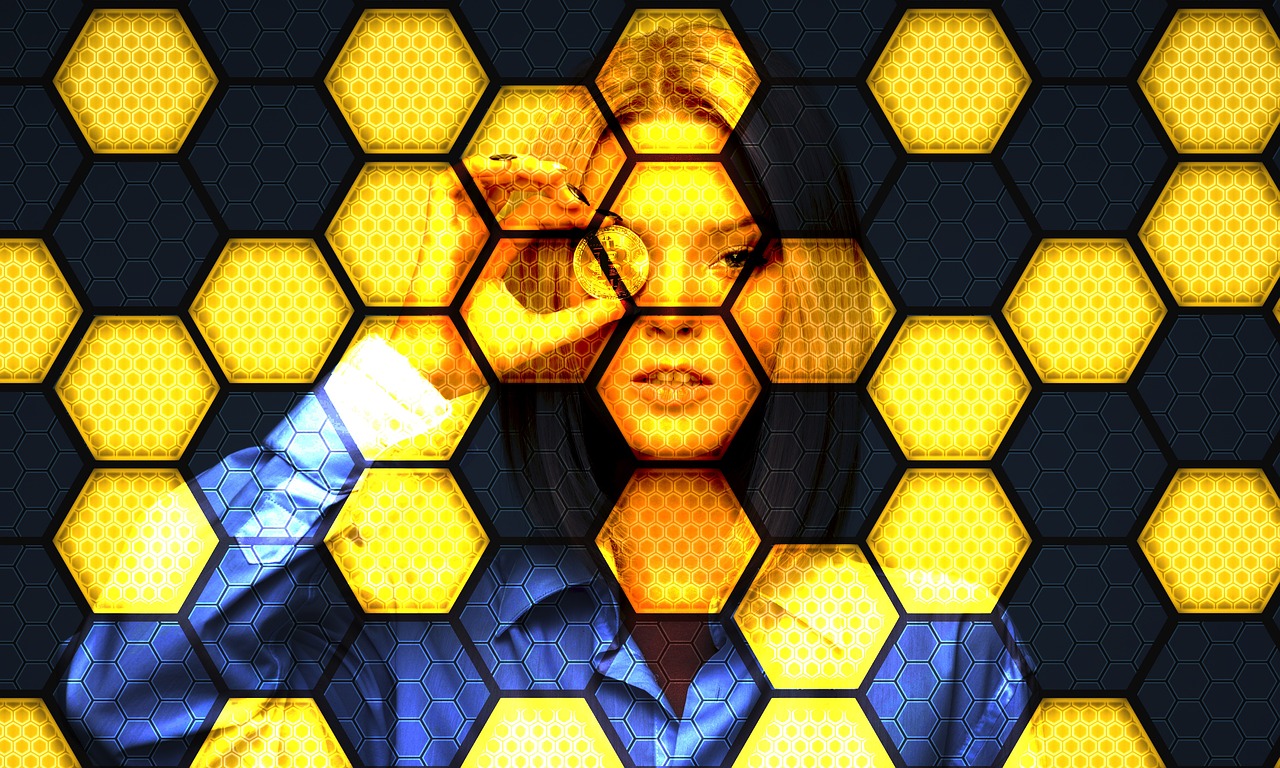
Key Features of Polygon
Polygon isn’t just another addition to the Ethereum ecosystem; it’s a transformative force that brings a plethora of features designed to enhance the overall user experience and scalability of the network. One of its standout characteristics is its modular architecture, which allows developers to customize their blockchain solutions according to specific needs. This flexibility means that whether you're building a high-frequency trading platform or a simple dApp, Polygon can be tailored to fit your requirements seamlessly.
Another significant feature is Polygon’s support for multiple scaling solutions. Unlike traditional blockchains that often rely on a single method for transaction processing, Polygon embraces a variety of techniques, including sidechains and rollups. This diversity not only enhances transaction throughput but also ensures that developers can choose the best method for their applications, leading to improved performance and user satisfaction.
Moreover, Polygon has developed a robust ecosystem that fosters collaboration among developers, businesses, and users. This ecosystem includes a wide range of tools and resources that make it easier for developers to create, deploy, and manage their dApps. By providing comprehensive documentation, SDKs, and support, Polygon empowers developers to innovate without the usual barriers that come with blockchain development.
To further illustrate the advantages of Polygon’s features, let’s take a closer look at how these elements come together:
| Feature | Description | Benefits |
|---|---|---|
| Modular Architecture | Customizable blockchain solutions for diverse needs. | Flexibility and tailored solutions for developers. |
| Multiple Scaling Solutions | Supports sidechains, rollups, and more. | Increased transaction throughput and efficiency. |
| Robust Ecosystem | Comprehensive tools and resources for developers. | Empowerment to innovate and create dApps easily. |
In addition to these features, Polygon also prioritizes security. By operating on top of Ethereum, it inherits the security protocols of the main chain, ensuring that all transactions processed through Polygon are secure and reliable. This is a crucial aspect, especially for businesses that are concerned about the safety of their digital assets and user data.
Lastly, let’s not forget about the interoperability that Polygon offers. This feature allows for seamless communication between different blockchains and Ethereum, making it easier for developers to migrate existing dApps or create new ones that leverage the strengths of both ecosystems. Such compatibility is essential in today’s diverse blockchain landscape, where users expect smooth experiences across various platforms.
In conclusion, Polygon’s key features not only address the existing challenges faced by Ethereum but also pave the way for future innovations in the blockchain space. By enhancing scalability, security, and user experience, Polygon is setting the stage for a more connected and efficient decentralized ecosystem.
- What is Polygon?
Polygon is a layer-2 scaling solution for Ethereum that enhances transaction speeds and reduces costs. - How does Polygon improve Ethereum's scalability?
It processes transactions off the main chain, alleviating congestion while maintaining Ethereum's security. - What are the main features of Polygon?
Key features include modular architecture, multiple scaling solutions, a robust ecosystem, and interoperability with Ethereum. - Can developers easily migrate their dApps to Polygon?
Yes, Polygon ensures seamless interoperability, making it easy for developers to migrate and enhance their applications.

Layer-2 Solutions Explained
Layer-2 solutions are a game-changer in the world of blockchain technology, especially when it comes to enhancing the capabilities of the Ethereum network. Imagine Ethereum as a bustling city with a single highway; as more vehicles (transactions) enter the highway, traffic jams become inevitable. This is where layer-2 solutions, like Polygon, come into play. They act like side roads that divert some of the traffic, allowing for smoother and faster travel without compromising the security of the main highway.
So, what exactly are these layer-2 solutions? Essentially, they are protocols built on top of the Ethereum blockchain that handle transactions off the main chain. By doing this, they significantly alleviate congestion and reduce transaction fees. It's like having a fast lane for your transactions, where you can zoom past the slower traffic! Polygon, in particular, utilizes various technologies to achieve this, including sidechains and rollups, each offering unique advantages.
To understand how layer-2 solutions work, let’s break down their core functionalities. They maintain a connection to the Ethereum blockchain, ensuring that all transactions are still secured by its robust consensus mechanism. This means that while transactions are processed off-chain, they can still be verified and settled on the main chain, ensuring that users don’t have to sacrifice security for speed. Here’s a quick overview of how this works:
| Layer-2 Solution | Functionality | Benefits |
|---|---|---|
| Sidechains | Independent blockchains that run parallel to Ethereum | Lower fees, faster transactions |
| Rollups | Batch multiple transactions into one for efficiency | High throughput, reduced costs |
This table illustrates the two primary types of layer-2 solutions that Polygon employs. Sidechains allow for greater flexibility, enabling developers to create customized environments tailored to specific use cases. On the other hand, rollups focus on aggregating transactions, which leads to significant enhancements in scalability.
Furthermore, the beauty of layer-2 solutions lies in their ability to provide **interoperability** with the Ethereum network. Developers can easily migrate their decentralized applications (dApps) to Polygon without losing any of the benefits associated with Ethereum's security. This seamless transition is vital for fostering innovation and encouraging more developers to join the ecosystem.
In summary, layer-2 solutions are essential for addressing the scalability challenges faced by Ethereum. They not only improve transaction speeds and lower costs but also maintain the high security standards that users expect from the Ethereum network. As the demand for decentralized applications continues to grow, the importance of these solutions will only become more pronounced, paving the way for a more efficient and user-friendly blockchain experience.

Sidechains vs. Rollups
When we dive into the world of scaling solutions for Ethereum, the terms sidechains and rollups often come up. But what do they mean, and how do they differ? Understanding these concepts is crucial for grasping how Polygon enhances Ethereum’s scalability. Think of it this way: if Ethereum is a bustling highway, sidechains and rollups are like alternate routes that help ease traffic congestion.
Sidechains are independent blockchains that run parallel to the Ethereum main chain. They are capable of processing transactions on their own and can have their own consensus mechanisms. This means that developers can create customized environments tailored to specific applications, offering flexibility and speed. However, sidechains do not inherit the security of the Ethereum main chain, which can be a double-edged sword. On one hand, you get more freedom; on the other, you might be sacrificing some security, which is paramount in the blockchain space.
On the flip side, we have rollups. Rollups process transactions off-chain but post the transaction data back to the Ethereum main chain. This approach allows rollups to benefit from Ethereum’s robust security while significantly increasing transaction throughput. There are two main types of rollups: Optimistic Rollups and ZK-Rollups. Optimistic Rollups assume transactions are valid by default and only check them if there's a dispute, making them faster but slightly less secure. ZK-Rollups, on the other hand, use cryptographic proofs to verify transactions, ensuring higher security but often at the cost of speed.
To illustrate the differences more clearly, let’s take a look at the following table:
| Feature | Sidechains | Rollups |
|---|---|---|
| Security | Independent, less secure | Inherits security from Ethereum |
| Transaction Speed | Fast, but depends on the sidechain | Very fast, as transactions are processed off-chain |
| Flexibility | Highly customizable | Less customizable, focused on Ethereum compatibility |
| Types | Various implementations | Optimistic and ZK-Rollups |
In conclusion, both sidechains and rollups play vital roles in Polygon's strategy to enhance Ethereum’s performance. While sidechains offer customization and speed, rollups provide a more secure and efficient way to scale transactions. The choice between the two often boils down to the specific requirements of the application being developed. As the blockchain ecosystem continues to evolve, understanding these differences will empower developers and users alike to make informed decisions.
- What is the main advantage of using Polygon?
Polygon significantly reduces transaction fees and increases transaction speeds, making it an attractive option for developers and users. - How do rollups ensure security?
Rollups post transaction data back to the Ethereum main chain, leveraging its security protocols to safeguard transactions. - Can I use both sidechains and rollups in my dApp?
Yes, developers can integrate both solutions depending on their specific needs and desired features.

Interoperability with Ethereum
One of the standout features of Polygon is its remarkable . Imagine a bustling city where every street is interconnected, allowing for smooth travel from one neighborhood to another. This is precisely how Polygon operates within the Ethereum ecosystem. It enables developers to seamlessly migrate their decentralized applications (dApps) to Polygon without sacrificing the robust security that Ethereum provides. This interoperability is crucial because it opens the door for existing Ethereum projects to enhance their performance while maintaining their trusted connection to the Ethereum blockchain.
Polygon achieves this through various mechanisms that facilitate communication and data exchange between the two networks. Developers can leverage Polygon’s layer-2 solutions to handle transactions more efficiently, reducing the burden on the Ethereum main chain. This not only results in faster transaction speeds but also significantly lowers transaction costs, which is a win-win for both developers and users. By allowing dApps to operate on Polygon, developers can tap into a larger user base that is eager for quicker and cheaper transactions.
Moreover, the compatibility of Polygon with Ethereum extends to smart contracts as well. Developers can deploy their existing Ethereum-based smart contracts on Polygon with minimal adjustments. This ease of migration is akin to using the same language in different countries; while there may be slight dialect differences, the core message remains clear and understandable. This encourages a vibrant ecosystem where innovation can flourish without the fear of losing existing investments in Ethereum-based technologies.
In addition, Polygon's commitment to interoperability means that it is not just a standalone solution. It is designed to work alongside other layer-2 solutions and sidechains, creating a mosaic of options for developers. This flexibility is essential in an ever-evolving landscape where new technologies and trends emerge regularly. By fostering an environment where multiple solutions can coexist and communicate, Polygon positions itself as a critical player in the future of decentralized technologies.
In conclusion, Polygon's interoperability with Ethereum is a game-changer for the blockchain landscape. It not only enhances the functionality of dApps but also encourages a collaborative environment where developers can innovate without boundaries. With this level of integration, the potential for growth and advancement within the Ethereum ecosystem is limitless, paving the way for a more scalable and efficient future.
- What is Polygon?
Polygon is a layer-2 scaling solution for Ethereum that enhances transaction speeds and reduces costs. - How does Polygon achieve interoperability with Ethereum?
Polygon allows developers to migrate their dApps easily and deploy existing Ethereum smart contracts with minimal changes. - What are the benefits of using Polygon?
Users benefit from faster transactions and lower fees, while developers can create more efficient dApps. - Can Polygon support various types of applications?
Yes, Polygon supports a wide range of applications, including DeFi, gaming, and NFTs.

Developer Ecosystem
Polygon has successfully cultivated a thriving developer ecosystem that stands as a testament to its commitment to innovation and accessibility. By providing a comprehensive suite of tools and resources, Polygon empowers developers to create cutting-edge decentralized applications (dApps) that leverage its advanced scaling solutions. Imagine a bustling marketplace where developers can easily access everything they need to build, test, and deploy their applications without the usual hassles associated with traditional blockchain development.
One of the standout features of Polygon's developer ecosystem is its modular architecture. This allows developers to choose the best scaling solution that fits their specific needs, whether they are looking to build a simple dApp or a complex DeFi protocol. The flexibility offered by Polygon means that developers can focus on what they do best—creating innovative applications—while Polygon handles the heavy lifting of scalability and security.
Moreover, the ecosystem supports a variety of programming languages, making it accessible to a broader range of developers. Whether you're a seasoned Solidity expert or a newcomer familiar with JavaScript, Polygon has something to offer. This inclusivity is crucial in fostering a diverse community of developers who can share ideas, collaborate on projects, and push the boundaries of what's possible in the blockchain space.
Additionally, Polygon offers extensive documentation and developer support, which is vital for anyone venturing into the world of blockchain development. The availability of tutorials, guides, and forums means that developers can quickly overcome challenges and learn from one another. This sense of community is like having a safety net; it encourages experimentation and innovation without the fear of failure.
To further enhance the developer experience, Polygon has launched several initiatives aimed at attracting talent and promoting creativity. These include hackathons, grants, and partnerships with educational institutions. Such initiatives not only provide funding but also create opportunities for developers to showcase their skills and gain recognition in the rapidly evolving blockchain landscape.
In summary, the developer ecosystem surrounding Polygon is a vibrant and dynamic space that is continuously evolving. By prioritizing accessibility, flexibility, and community support, Polygon is paving the way for the next generation of dApps that can operate seamlessly within its robust infrastructure. This is not just about building applications; it's about creating a future where decentralized technologies are accessible to everyone, and where developers can thrive in an environment that fosters innovation.
- What is Polygon? Polygon is a layer-2 scaling solution for Ethereum that enhances transaction speeds and reduces costs for decentralized applications.
- How does Polygon improve scalability? By processing transactions off the main Ethereum chain, Polygon alleviates congestion and improves throughput.
- What are the benefits of using Polygon for developers? Developers benefit from a modular architecture, extensive resources, and a supportive community, making it easier to build and deploy dApps.
- Can I use different programming languages on Polygon? Yes, Polygon supports multiple programming languages, providing flexibility for developers with different skill sets.
- What types of applications can be built on Polygon? Polygon supports a wide range of applications, including DeFi platforms, gaming, and NFTs.
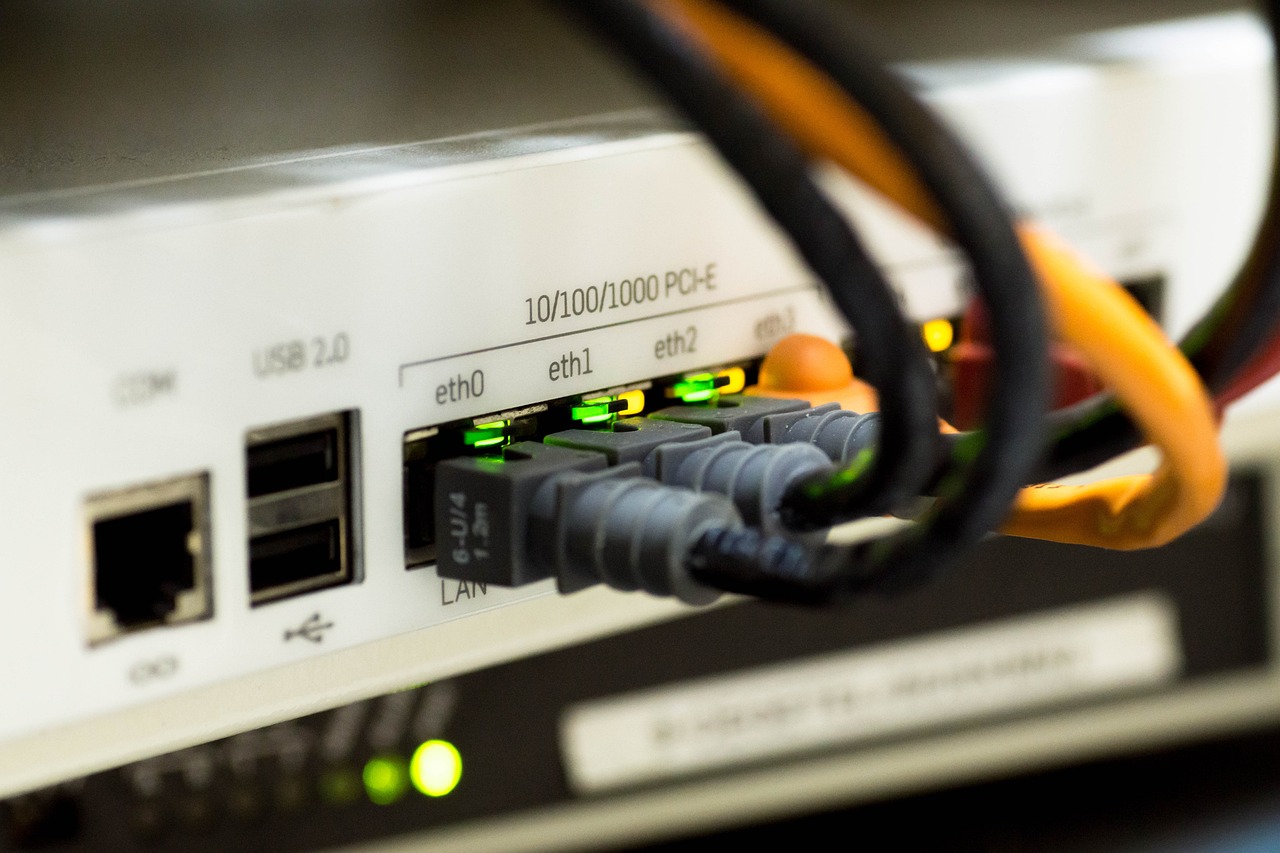
Use Cases of Polygon
Polygon has emerged as a game-changer in the blockchain world, showcasing its versatility across various sectors. One of the most prominent areas where Polygon shines is in Decentralized Finance (DeFi). By leveraging its layer-2 scaling solutions, Polygon enables users to engage in lending, borrowing, and trading activities with significantly lower fees and faster transaction speeds. This means that users can execute trades and manage their assets without the frustration of high gas fees that often plague the Ethereum network.
Moreover, the gaming industry has also embraced Polygon with open arms. With its ability to facilitate quick transactions at minimal costs, gaming developers can create immersive experiences that keep players engaged. Imagine playing a game where every transaction, whether it's buying a new character or trading items, happens almost instantaneously. Polygon makes this a reality, allowing for a seamless gaming experience that keeps players coming back for more.
In addition to DeFi and gaming, Polygon is making waves in the Non-Fungible Token (NFT) space. The NFT market has exploded in recent years, and Polygon's low transaction costs are a boon for artists and collectors alike. This platform allows creators to mint and sell their digital art without worrying about prohibitive fees, thus democratizing access to the NFT market. Artists can focus on their creativity while Polygon takes care of the heavy lifting behind the scenes.
To give you a clearer picture of how Polygon is being utilized across these industries, let's take a look at some specific use cases:
| Use Case | Description | Benefits |
|---|---|---|
| DeFi Applications | Platforms allowing users to lend, borrow, and trade assets. | Faster transactions, lower fees, and increased accessibility. |
| Gaming | Blockchain-based games that require quick transactions. | Enhanced user experience and engagement. |
| NFT Marketplaces | Platforms for buying, selling, and trading NFTs. | Reduced costs for minting and trading NFTs. |
As we can see from the table, Polygon's impact spans a wide range of use cases, each benefiting from its unique capabilities. The combination of speed, cost-effectiveness, and security positions Polygon as a leading solution for developers and users alike. Whether you're a DeFi enthusiast, a gamer, or an artist looking to enter the NFT space, Polygon provides the tools and infrastructure necessary to thrive in the digital economy.
Q: What is Polygon?
A: Polygon is a layer-2 scaling solution for Ethereum that aims to enhance transaction speeds and reduce costs for decentralized applications.
Q: How does Polygon improve Ethereum's scalability?
A: By processing transactions off the main Ethereum chain, Polygon alleviates congestion and allows for faster transaction processing while maintaining Ethereum's security.
Q: What types of applications can be built on Polygon?
A: Polygon supports a variety of applications, including decentralized finance (DeFi) platforms, gaming, and non-fungible tokens (NFTs).
Q: Why are low transaction fees important?
A: Low transaction fees make blockchain technology more accessible, allowing more users to engage in activities like trading and minting NFTs without the burden of high costs.
Q: Is Polygon compatible with Ethereum?
A: Yes, Polygon is designed to be fully interoperable with Ethereum, allowing developers to migrate their dApps easily and users to benefit from enhanced performance.
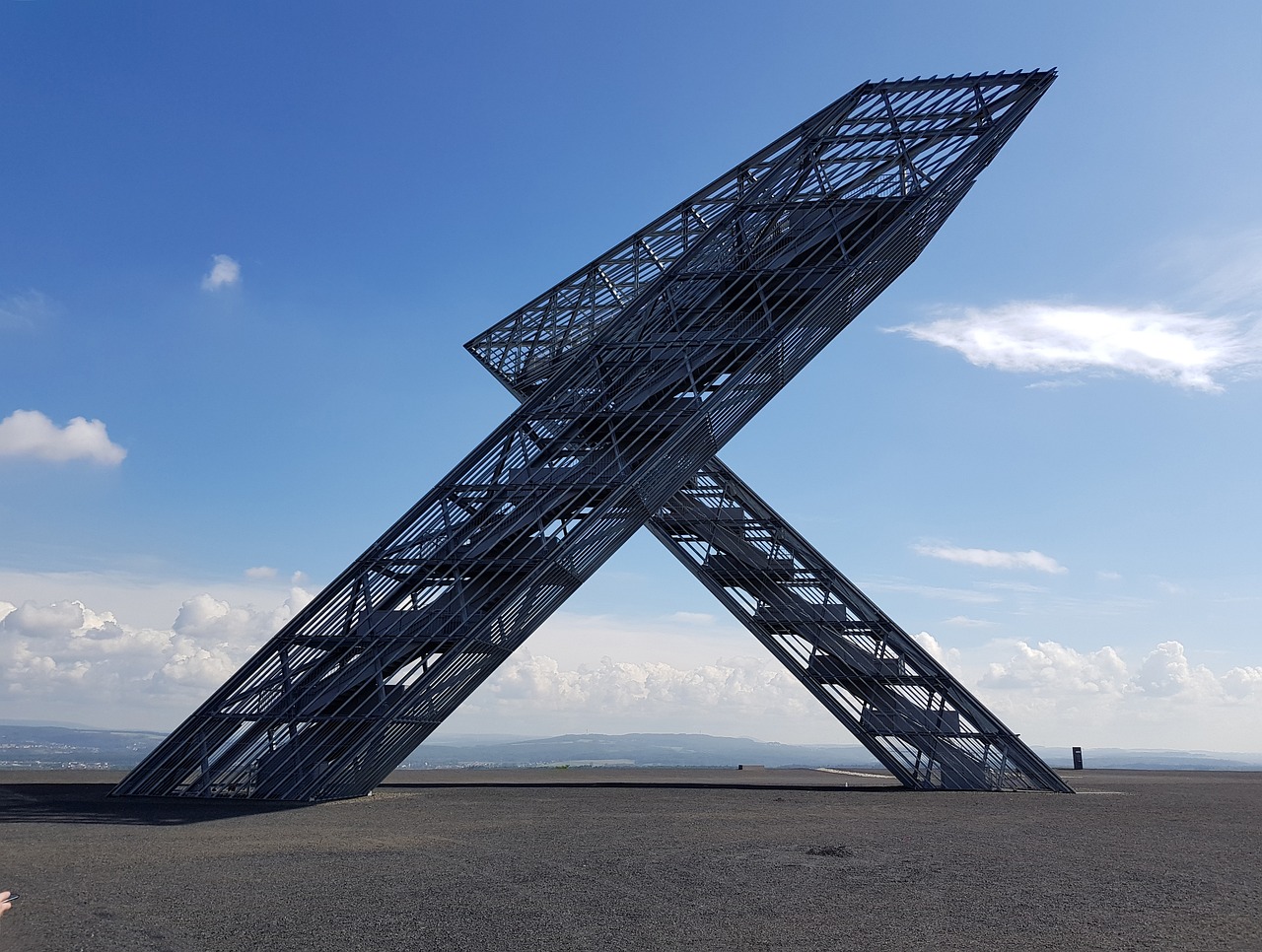
Decentralized Finance (DeFi)
Decentralized Finance, or DeFi, is revolutionizing the financial landscape by providing users with a way to engage in financial activities without the need for traditional intermediaries like banks. With Polygon's innovative scaling solutions, the DeFi sector is experiencing a significant boost in efficiency and accessibility. Imagine a world where you can lend, borrow, and trade assets instantly, without the cumbersome fees and delays typically associated with traditional finance. That's exactly what Polygon is making possible!
One of the most compelling advantages of using Polygon for DeFi applications is its ability to reduce transaction costs. On Ethereum’s mainnet, gas fees can be prohibitively high, especially during peak times. However, Polygon drastically lowers these costs, allowing users to engage in financial transactions without worrying about breaking the bank. This affordability opens up the DeFi ecosystem to a broader audience, enabling more people to participate and benefit from these groundbreaking financial tools.
Furthermore, Polygon's high throughput means that transactions can be processed at lightning speed. This is particularly crucial for DeFi platforms where timing can be everything. For instance, in lending and borrowing protocols, being able to execute a transaction quickly can make the difference between securing a loan or missing out on an opportunity. Polygon ensures that users can interact with these platforms seamlessly, enhancing their overall experience.
Moreover, the interoperability of Polygon with Ethereum allows developers to easily migrate their existing DeFi applications to Polygon's network. This means that popular DeFi projects can leverage Polygon’s scalability without having to completely overhaul their systems. As a result, users can continue to enjoy their favorite DeFi services while benefiting from lower fees and faster transactions.
To illustrate the impact of Polygon on the DeFi space, let's take a look at some key statistics:
| Metric | Ethereum Mainnet | Polygon |
|---|---|---|
| Average Transaction Fee | $20+ | $0.01 - $0.10 |
| Transaction Speed | ~15 transactions per second | ~7,000 transactions per second |
| DeFi Projects Supported | Over 200 | Over 1,000 |
This table clearly shows how Polygon is not just an alternative, but a superior option for those looking to explore the DeFi landscape. With its affordable fees, high transaction speeds, and a rapidly growing ecosystem, Polygon is paving the way for the next generation of financial services.
In summary, Polygon is a game-changer in the DeFi sector. By addressing the common pain points associated with traditional finance and Ethereum's limitations, it empowers users to take control of their financial futures. The potential for innovation in this space is immense, and as more developers harness the power of Polygon, we can expect to see even more exciting developments in the DeFi world.
- What is DeFi? DeFi stands for Decentralized Finance, which refers to financial services that operate on a blockchain without traditional intermediaries.
- How does Polygon enhance DeFi? Polygon reduces transaction fees and increases transaction speeds, making DeFi applications more accessible and efficient.
- Can I use existing DeFi applications on Polygon? Yes, many existing DeFi applications can be migrated to Polygon, allowing users to benefit from its enhancements without losing access to their favorite services.
- Is using Polygon safe? Yes, Polygon inherits Ethereum's security features while providing additional scalability, making it a secure option for DeFi transactions.

Gaming and NFTs
In recent years, the gaming industry has experienced a seismic shift, and Polygon is at the forefront of this transformation. With its low transaction costs and high throughput, Polygon is becoming a go-to platform for developers and gamers alike. Imagine a world where you can trade in-game assets, earn rewards, and participate in decentralized gaming without the burden of exorbitant fees or sluggish transaction times. This is the reality Polygon is creating, making gaming not just more accessible but also more enjoyable.
The appeal of Polygon in the gaming sector lies in its ability to handle a vast number of transactions simultaneously. Traditional gaming platforms often struggle with scalability issues, leading to lag, downtime, and frustrated players. However, Polygon's layer-2 solution processes transactions off the Ethereum main chain, ensuring that games run smoothly even during peak times. This means that gamers can engage in action-packed battles or participate in massive multiplayer events without worrying about whether the network can handle the load.
Moreover, the rise of Non-Fungible Tokens (NFTs) has revolutionized the way we think about ownership in the digital realm. NFTs allow players to own unique in-game items, skins, and collectibles, creating a new economy within games. Polygon's support for NFTs has opened up a treasure trove of possibilities. Developers can create games where players truly own their assets, trade them in secondary markets, and even earn money through gameplay. It’s like turning your gaming hobby into a potential income stream, which is a game-changer for many.
To illustrate the growing impact of Polygon in gaming and NFTs, consider the following table that highlights some of the key advantages:
| Feature | Benefits |
|---|---|
| Low Transaction Fees | Encourages frequent trading and microtransactions without financial strain. |
| High Throughput | Supports thousands of transactions per second, ensuring smooth gameplay. |
| Seamless Integration | Developers can easily integrate Polygon into existing Ethereum dApps. |
| Robust Security | Benefits from Ethereum's security protocols while maintaining scalability. |
Furthermore, Polygon's ecosystem is rich with opportunities for innovation. Developers can leverage various tools and frameworks to create immersive experiences that utilize the power of blockchain technology. Whether it’s developing a play-to-earn game or launching a new NFT marketplace, the possibilities are endless. The community surrounding Polygon is vibrant and supportive, fostering collaboration and creativity among developers.
In summary, Polygon is not just enhancing the gaming experience; it's redefining what it means to play and own digital assets. As more developers flock to this platform, we can expect to see a wave of innovative games and NFT projects that push the boundaries of what’s possible. The future of gaming on Polygon looks bright, and players are in for an exhilarating ride!
- What is Polygon? Polygon is a layer-2 scaling solution for Ethereum that enhances transaction speeds and reduces costs.
- How does Polygon improve gaming experiences? By offering low transaction fees and high throughput, Polygon allows for seamless gameplay and trade of in-game assets.
- What are NFTs? Non-Fungible Tokens (NFTs) are unique digital assets that represent ownership of specific items, often used in gaming and art.
- Can developers easily integrate Polygon into their games? Yes, Polygon provides tools and resources that facilitate easy integration for developers.
Frequently Asked Questions
- What is Polygon (MATIC)?
Polygon, also known as MATIC, is a layer-2 scaling solution for Ethereum that aims to enhance transaction speeds and reduce costs. It allows developers to build decentralized applications (dApps) that are more efficient and accessible to users.
- How does Polygon improve Ethereum's scalability?
Polygon improves scalability by processing transactions off the main Ethereum chain, which alleviates congestion. This layer-2 solution utilizes various technologies like sidechains and rollups to ensure faster transaction times while maintaining Ethereum's security features.
- What are sidechains and rollups?
Sidechains are separate blockchains that run parallel to the main Ethereum chain, allowing for independent transaction processing. Rollups, on the other hand, bundle multiple transactions into a single one before submitting it to the main chain, which significantly reduces the load and speeds up processing.
- Can developers easily migrate their dApps to Polygon?
Absolutely! Polygon ensures seamless interoperability with Ethereum, making it easy for developers to migrate their dApps without sacrificing security or functionality. This flexibility is one of Polygon's standout features.
- What types of applications can be built on Polygon?
Polygon supports a wide range of applications, including decentralized finance (DeFi) platforms, gaming applications, and non-fungible tokens (NFTs). Its low transaction costs and high throughput make it particularly attractive for these sectors.
- How does Polygon benefit DeFi users?
Polygon provides faster transaction speeds and lower fees for DeFi activities like lending, borrowing, and trading. This makes it a popular option among users who want to maximize their returns without incurring high costs.
- What advantages does Polygon offer for gaming and NFTs?
For gaming and NFT platforms, Polygon's low transaction costs and ability to handle high volumes of transactions lead to smoother user experiences. This encourages greater user engagement and interaction with digital assets.
- Is Polygon secure?
Yes, Polygon inherits Ethereum's security features, ensuring that transactions processed on its network are secure. This makes it a reliable choice for developers and users alike.

